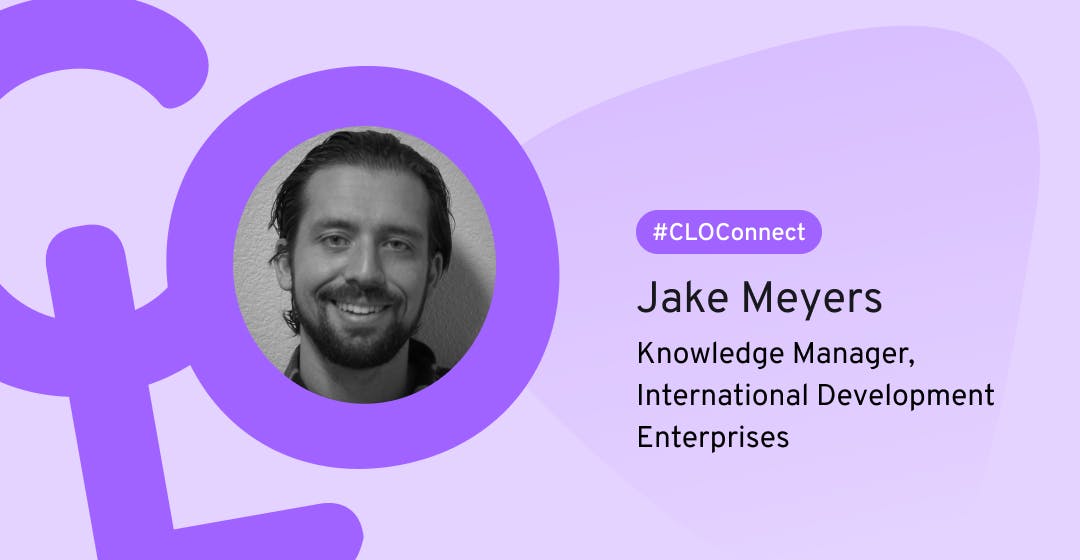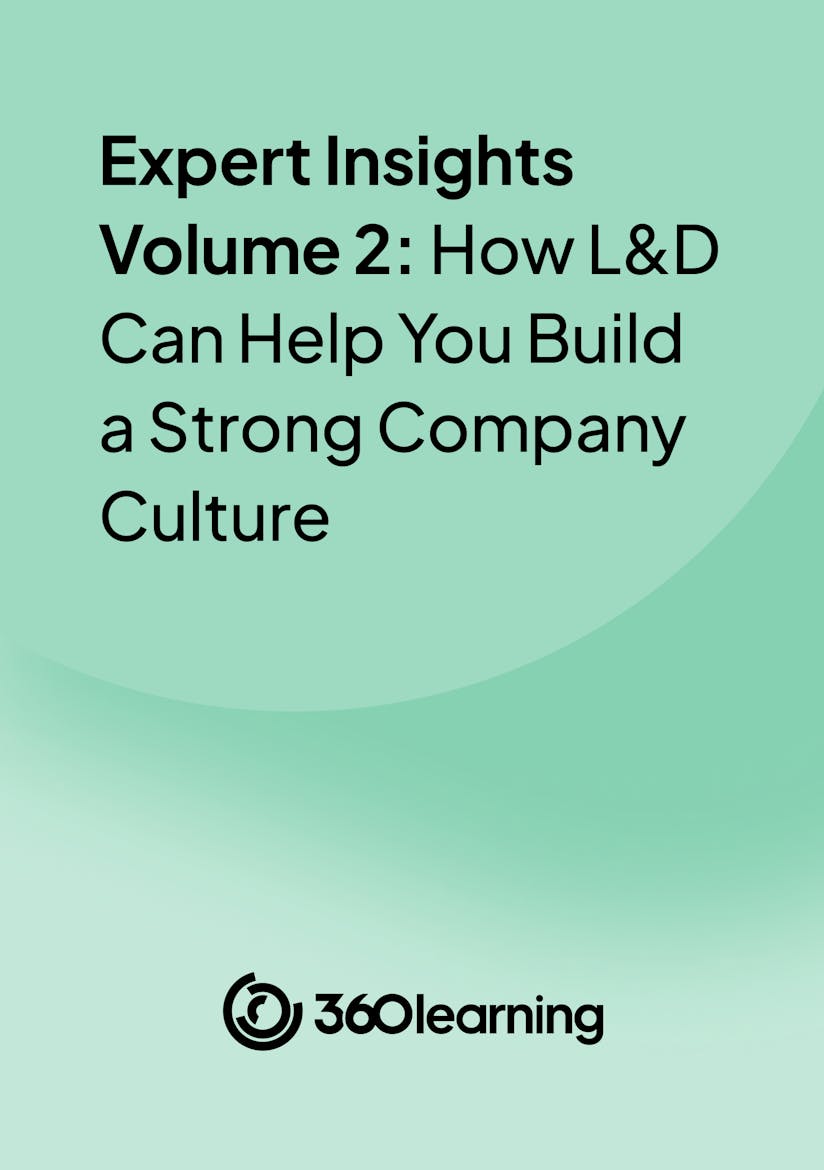
A 2-Part Collaborate, Learn, and Adapt Framework: Knowledge Management Storytelling at iDE
As L&D professionals, we all understand how important information is as a resource for our organizations. But we also know it's challenging to capture tacit knowledge meaningfully.
So, is there a workable strategy you can use to gather data at the project level and in the process, improve organizational culture, processes, and resources too?
In this interview, I speak with Jake Meyers, Knowledge Manager at International Development Enterprises (iDE), about how many organizations would benefit from exploring the collaborate, learn, and adapt approach to learning. From response work for FEMA to how he came into his role at iDE, Jake shares his journey in building a global knowledge management strategy.
So, why is a global knowledge management strategy essential for a non-profit, international development organization like iDE? Read on to hear more.
Loving what you’re reading? Come and join the L&D Collective for more great learning insights, resources, and events!
How knowledge management is evolving at iDE
iDE has a 40-year history of empowering entrepreneurs to end poverty. “We build market resilient ecosystems,” says Jake. “We do agricultural work, water and sanitation, and access to finance to help improve the lives of our clients, which have been around 40 million people across ten different countries.”
“We have 1,300 employees, a small decentralized headquarters of 50 or so staff out of Denver, and ten different country offices. And so, we're trying to grapple with how we learn, adapt, and communicate with each other to highlight best practices and learn from failure.”
Looking for more expert tips? Find out how L&D leaders at Harry’s, Robert Half, Disneyland Paris and more are turning L&D into a driver of company culture.

What's company culture without L&D?
By providing your contact info, you agree to receive communications from 360Learning. You can opt-out at any time. For details, refer to our Privacy Policy.
A knowledge management journey begins
Jake’s knowledge management journey began when he was an undergrad.
“We all had to read Plato’s The Allegory of the Cave, which is this idea of how you get out of the cave of what you don't know and embrace the truth. Knowledge management comes down to this appetite and attitude of being intentionally curious and asking questions.”
Jake’s had a long journey doing different things that led him to iDE, including studying overseas, serving in the Peace Corps, and being a Fulbright Scholar, where he enquired about what strategies individuals used to combat a wildfire in Cambodia.
“I went to grad school where I learned more about applied social science and the importance of how you do ethnography or anthropology but in an applied sense. How do you use people's insights to inform decision-making?” says Jake.
“And I got my introduction to that in 2020, when COVID-19 first hit. I was fresh on the job market out of grad school and joined FEMA’s Continuous Improvement program.”
FEMA’s storytelling approach
Continuous Improvement is a program that was born out of Hurricane Katrina. As Jake explains, because of FEMA's failures during Hurricane Katrina, they established the program to go out and strategically draw lessons from experience.
“I learned this cool approach of getting people's insights in a very busy operational go, go, go environment. It's all about asking questions, listening, and then telling that story. You need to be able to capture and communicate the information in a way that your target audience will act upon.”
“And that’s where I got introduced to knowledge management as a discipline and to lean on the tool of after-action reviews as the premier gold standard way of asking people to gather lessons learned,” he says.

Building a global knowledge management strategy from scratch
Seeing a knowledge management job advert, Jake brought that perspective to iDE.
“I thought what a great opportunity to bring this storytelling approach,” he explains, “and build a global knowledge management strategy at iDE from scratch. We've been doing knowledge management in different capacities, but we need a global approach to cut across silos and learn from each other.”
“I'm tactically focused on bringing the storytelling lens to how we ask questions. We have monitoring and evaluation specialists who count and do qualitative research, but it's trying to get people to get creative, think about stories, and how to communicate them.”
Good knowledge management can learn a lot from journalism or psychology–asking questions to get to the root cause of the frustration or pain point, and then being a practitioner around that problem and using the data to inform decision-making.
“So, that’s what I'm trying to bring to my current role. I have a background in understanding the technical side of the issues, but I’m trying to bring this emotionally intelligent, storytelling-driven, and decision-support lens to knowledge management in an all-encompassing way,” he says.
I’m trying to bring this emotionally intelligent, storytelling-driven, and decision-support lens to knowledge management in an all-encompassing way.
So, what’s the overlap between learning and knowledge management? In Jake’s experience, the concept of collaborate, learn, and adapt (CLA) is the key.
Related: Enabling Knowledge Sharing: CloudBlue’s 3-Step Approach to Learning Curation
Collaborate, learn, and adapt: a 2-part framework
Collaborate, learn, and adapt, or CLA, is a framework born out of the United States Agency for International Development.
Essentially, as Jake describes, CLA is an approach that divides thinking about knowledge management and learning into two parts.
First up is the project side of CLA.
Part 1: the project cycle
In applying CLA when doing projects, you start by identifying the different tactics and approaches for collaboration.
“How do we learn?” says Jake. “How do we draw from our evidence base? How do we test our theories of change? And then how do we adapt? How do we pause and reflect throughout the project? How do we create those moments?”
For example, Jake pushes a culture of participatory learning to occur once every six months for key projects during After-Action Review workshops. In these workshops, Jake works with key stakeholders to collect the tacit knowledge, insights, experience, know-how, and viewpoint that is difficult to capture in an email or report adequately.
“This pulls apart this facilitative technique, leveraging tacit knowledge that you can truly learn and then taking all of that and being adaptive in our approach. You can't just do learning to be interesting. You need to learn to create change.”
This pulls apart this facilitative technique, leveraging tacit knowledge that you can truly learn and then taking all of that and being adaptive in our approach. You can't just do learning to be interesting. You need to learn to create change.
“And the theory is,” he says, “if you can leverage that tacit knowledge and pair it with all that rich data and information, that's how you can be innovative. That's how you get teams moving forward.”
Next up is the organizational side of CLA.
Part 2: the organizational level
On the other side of CLA, Jake explains, you want to think about culture, process, and resources at an organizational level.
“Culture is all about openness,” he says. “It’s about relationships and networks. It's coming from a space of identifying community practices and baking in basic knowledge management principles at the organizational level so you can generate, capture, share, and use knowledge across the organization that everybody can access.”
Resources, Jake explains, are about having dedicated staff and the resources to fund activities, hire consultants, and everything else you need to do.
“And you're seeing more and more organizations like mine in the international development space invest and use CLA to communicate the way you do knowledge management at a project level,” says Jake.
iDE’s collaborate, learn, and adapt approach highlights the importance of collaborative learning. By bringing people together to discuss lessons learned, they can gain tacit information to improve on future projects and foster a culture and environment where employees feel comfortable sharing and building relationships.
Other ways to consider knowledge management
In Jake’s experience, you can think about knowledge management in a lot of different ways.
Knowledge management can be seen from an onboarding/offboarding perspective. It can be creating access to information networks on Google Drive or SharePoint, or you can think of it as organizational learning.
“For me,” says Jake, “it's all about innovating the knowledge management space to leverage tacit knowledge. In that process, you capture lessons learned. And when you capture lessons learned well–when you have a robust database of lessons learned–then it’s about what can you do next.”
You can adapt, change, and internally communicate those lessons learned so that people can learn from each other when you have a siloed organization. You can also tell impactful stories of learning on that journey.
“For me, it's bridging the gap between our evidence and analytics teams, then our communications team to try to make sense of how we use these lessons learned and how to use this knowledge to the highest capacity possible,” he says.
What does it take to be a knowledge management expert?
According to Jake, every knowledge manager should be intentionally curious. You should embody the spirit of a child asking why 1,000 times because not everyone will provide you with genuinely compelling answers.
“When you ask why it's the root cause,” says Jake, “you can identify a lesson learned. And to me, a lesson learned is that unit of measurement for tacit knowledge, getting claims about what worked well and what didn’t, and providing evidence for those claims. You’re communicating: why should we care?”
“And the last piece is providing an actionable recommendation. You just took somebody's time to ask them what went wrong and what didn't. You better get their perspective to move the needle forward on whatever that issue or solution is,” he says.
You just took somebody's time to ask them what went wrong and what didn't. You better get their perspective to move the needle forward on whatever that issue or solution is.
Jake recommends that you be operational about knowledge management. “Measure it, define your terms, and figure out the lesson learned so you can make the most of people's time when you're engaged in knowledge management activities.”
Thanks to Jake for sharing his knowledge management journey with us!
For more expert advice on approaches to collaborative learning, check out our interview with Francesc BoCo about CloudBlue’s three steps for facilitating knowledge sharing or with Frédéric Voyer at My Job Glasses about how they design career mentoring by leveraging human connections.
Want more peer insights on transforming workplace learning? Sign up to become a member of the L&D Collective, and check out our other #CLOConnect interviews with top L&D leaders on driving growth and scaling culture through Collaborative Learning. Or you can subscribe (below 👇) to our weekly newsletter to receive our latest posts directly in your inbox.

